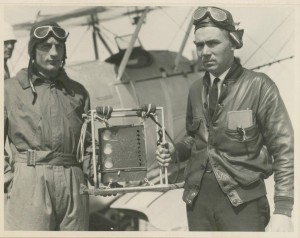Aircrafts: A Flying Weather Station
By Michael FaginWeather Conditions, Weather for PilotsWith 0 commentsAircrafts: flying weather stations, have been equipped to record atmospheric conditions along their flight paths. Another aircraft may not travel anywhere close to the same airspace again for a long time but the data gathered is still useful. Computers input this information, crunch the numbers and can usually forecast general threats.
Weather advisories are separated into two classifications to clarify whom they affect: Significant Meteorological (SIGMET) and Airman’s Meteorological (AIRMET). Airman’s advisories focus on restricted visibility, icing, surface winds over 30 mph and turbulence. SIGMET advisories target strong and severe weather that may affect everyone. They are issued in the observance of forecasts assembled from data that comes primarily from airports and secondarily from sensors on airborne aircraft. [Atmospheric soundings compiling airport data can be plotted here
Photo: A WWI aerometeorograph. By Commander Don Cruse, Retired US Navy, courtesy of navalweather.org.

Aerometeorographs were the first devices attached to aircraft to measure temperature, humidity and barometric pressure. During World War I, the Weather Bureau paid aircraft owners to strap them to their wing struts and operate them while in flight. Pilots needed to fly higher than 13,500’ for their data to be useful but this was often challenging and physiological effects from the altitude caused many to pass out. The radiosonde replaced this technology by 1940 and proved itself effective throughout World War II. Modern onboard GPS receivers also record wind speed and direction.
Abroad, automated meteorological reports are called Aircraft Meteorological Data Relay (AMDAR) reports. Presently, coverage of the AMDAR is concentrated around the world’s major population centers and especially Europe. Japan, Hong Kong, Canada and Saudi Arabia are among countries that are building their own AMDAR utilities.
The United States’ data system is the Aircraft Communication Addressing and Reporting System (ACARS.) ACARS data is fed through Aeronautical Radio Inc. (ARINC), which reports passenger loading information, weather data, details from the dispatch, etc. US data is also commonly called Meteorological Data Collection and Reporting System (MDCRS) data. The MDCRS extracts ACARS data from ARINC and sends it to the National Centers for Environmental Prediction (NCEP) to be added to existing model data. The Global Telecommunications System then receives NCEP’s models and sends them to the globe’s numerical weather prediction centers. About 1,500 Federal Express, UPS, Northwest, United, Delta and American Airlines aircraft presently provide data to the National Weather Service and Federal Aviation Administration.
A disadvantage of relying on ACARS data is the nature of flight times. Forecasts are particularly crisp in the evening, the peak of traffic. There is only a quarter of that traffic in the early morning hours. It is said ACARS data reports retain only 60% of their quality on the weekends, when customary shipping pauses for FedEx and UPS. These two are important because they capture low-level, high-vertical-resolution data.
0.9% of wind and 2.9% of temperature data is rejected by ACARS’ quality control system. Soil, water, insects and other masking foreign objects are the primary causes of bad data.
Most flight data is gathered between 25,000’ – 45,000’, high enough to be distributed somewhat uniformly over the contiguous United States. Flight data collection is best around major airports and poorest just east of both northern and southern California, where almost no flights traverse.
Pilot Reports
Some commercial aircraft send pilot initiation text reports
PIREPs through the ACARS. A utility called NOAAPORT sends PIREPs to NOAA’s Earth System Research Laboratory’s Global Systems Division. A PIREP begins with an SA identifier or a collection site and includes important weather conditions.
Article written Meteorologist Geoff Linsley
